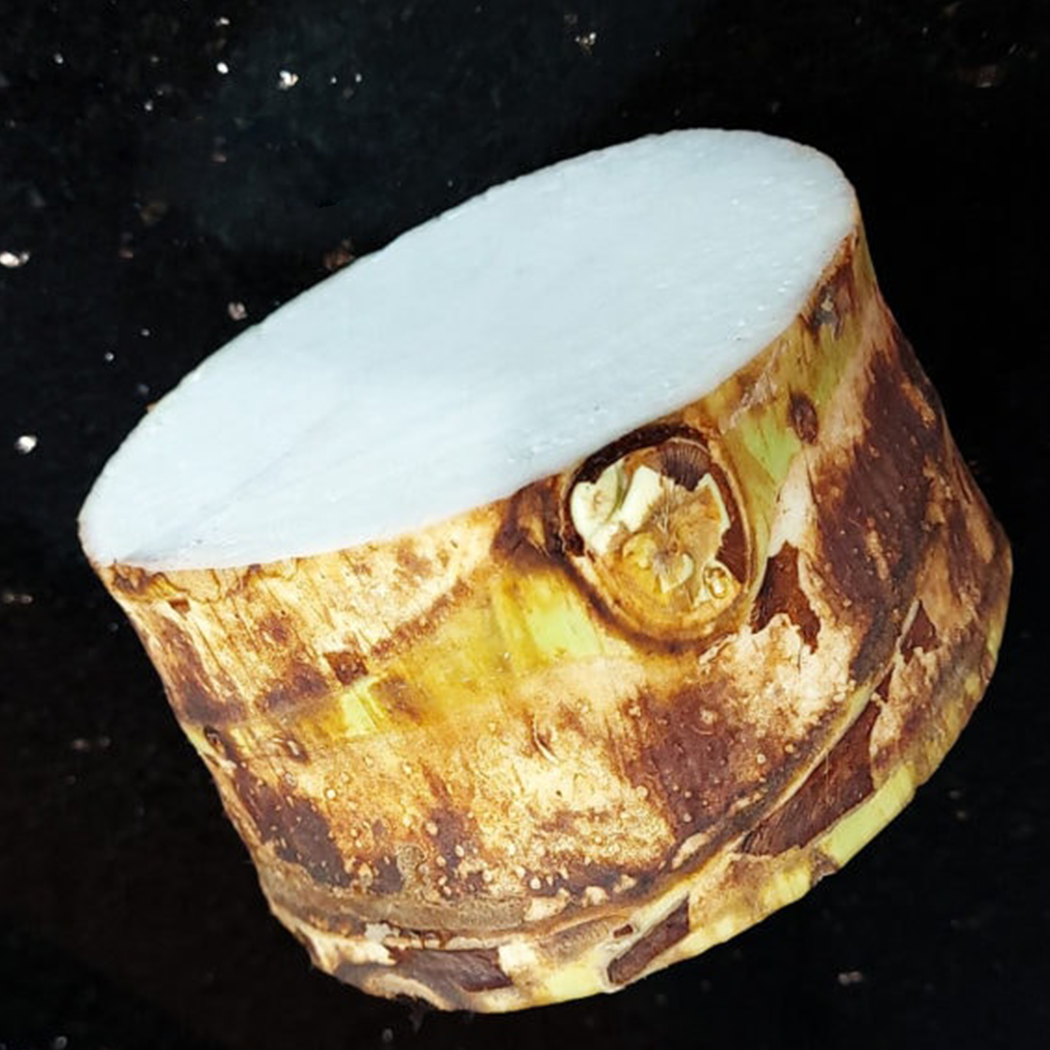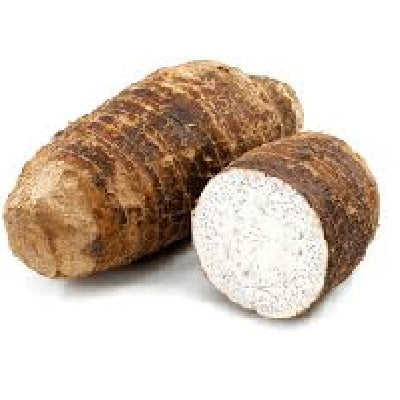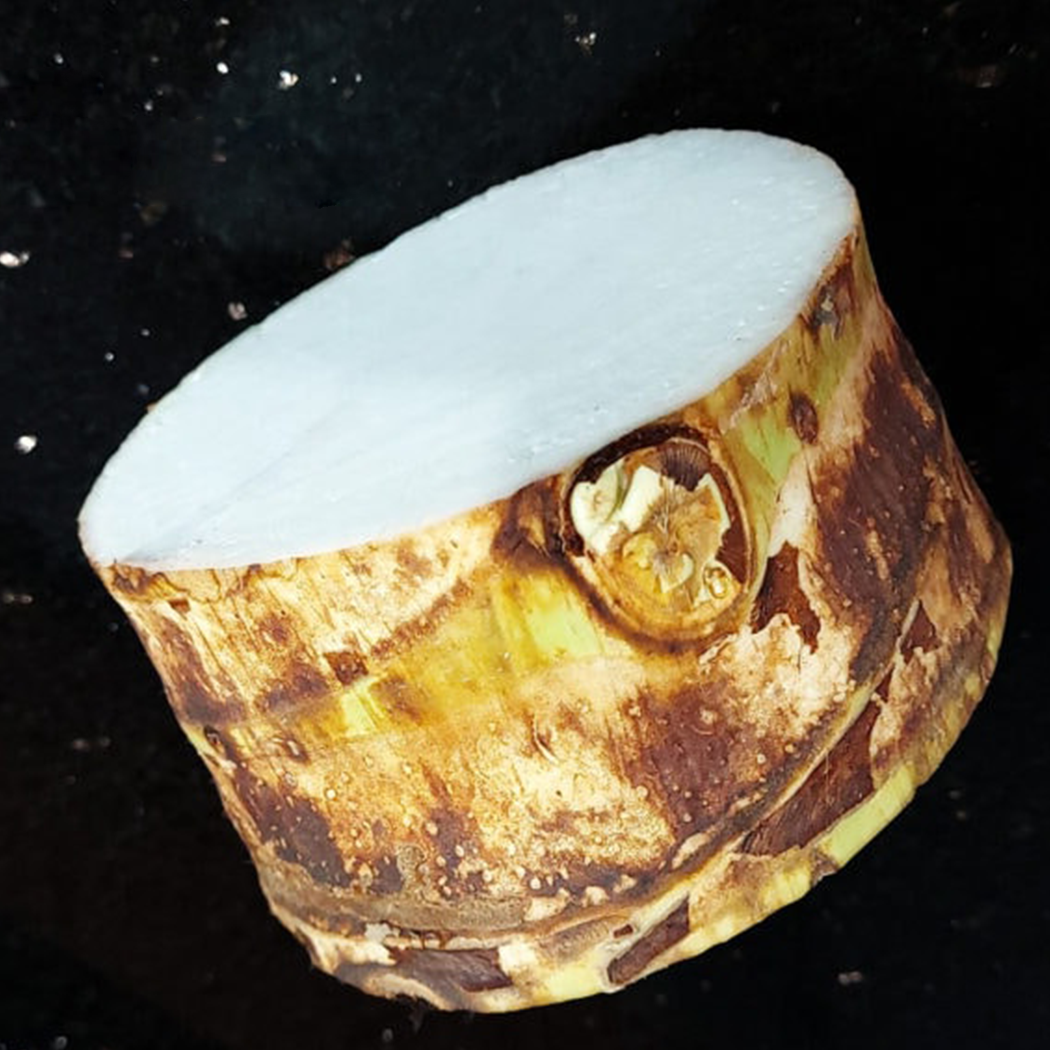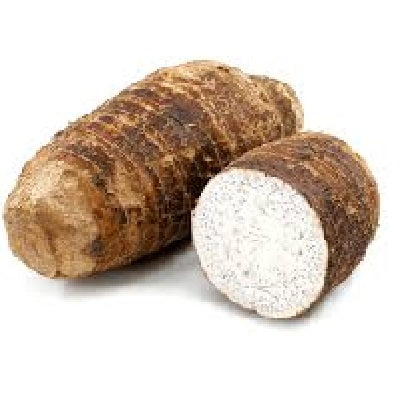Good Food Bar
Maan Kochu / Taro Root
Maan Kochu / Taro Root
Regular price
Rs. 269.00
Regular price
Rs. 399.00
Sale price
Rs. 269.00
Unit price
per
Couldn't load pickup availability
Taro root, scientifically known as Colocasia esculenta, is a starchy tuber vegetable widely consumed in various parts of the world, especially in tropical and subtropical regions. It belongs to the Araceae family and is known by different names in different regions, such as "arbi" in India, "eddo" in the Caribbean, and "dasheen" in some English-speaking countries. Here's a description of taro root:
1. Appearance: Taro root has a unique and distinctive appearance. It is typically round or oblong and can vary in size, ranging from small to quite large. The skin is usually rough and covered in brown or hairy patches. The color of the skin can vary from light tan to dark brown or purple, depending on the variety.
2. Flesh: The flesh of taro root is creamy white or pale lavender when cooked. It has a smooth and dense texture, similar to a potato but slightly more slippery or mucilaginous.
3. Flavor: Taro root has a mildly sweet and nutty flavor when cooked. Its taste is somewhat like a cross between a sweet potato and a potato, with a hint of chestnut-like earthiness.
4. Culinary Uses: Taro root is a versatile ingredient used in a wide range of culinary applications. It can be boiled, steamed, fried, or roasted and used in both savory and sweet dishes. Common preparations include taro chips, taro fries, taro stews, and taro-based desserts.
5. Nutrition: Taro root is a nutritious food source. It is rich in complex carbohydrates, dietary fiber, and provides essential vitamins and minerals like vitamin A, vitamin C, vitamin E, potassium, and folate. However, it should be noted that taro root also contains oxalates, which can be harmful if consumed in excess.
6. Allergenic Potential: Some individuals may experience skin irritation when handling raw taro due to the presence of calcium oxalate crystals. Proper cooking eliminates this issue.
7. Cultural Significance: Taro root holds cultural significance in many regions where it is grown. It is a staple crop in many Pacific Island nations and features prominently in their traditional cuisine. In Hawaiian culture, taro is used to make poi, a traditional fermented dish.
8. Growth Conditions: Taro is typically grown in marshy or waterlogged conditions, often in flooded fields. The leaves and stems of the taro plant are also edible and are used in some culinary preparations.
9. Varieties: There are numerous varieties of taro grown worldwide, each with slightly different characteristics, including taste, texture, and appearance.
Taro root is valued not only for its culinary versatility but also for its contribution to the dietary diversity and cultural heritage of various communities around the world. It offers a unique flavor and texture profile that can enhance a wide range of dishes, making it an interesting and valuable addition to many cuisines.
1. Appearance: Taro root has a unique and distinctive appearance. It is typically round or oblong and can vary in size, ranging from small to quite large. The skin is usually rough and covered in brown or hairy patches. The color of the skin can vary from light tan to dark brown or purple, depending on the variety.
2. Flesh: The flesh of taro root is creamy white or pale lavender when cooked. It has a smooth and dense texture, similar to a potato but slightly more slippery or mucilaginous.
3. Flavor: Taro root has a mildly sweet and nutty flavor when cooked. Its taste is somewhat like a cross between a sweet potato and a potato, with a hint of chestnut-like earthiness.
4. Culinary Uses: Taro root is a versatile ingredient used in a wide range of culinary applications. It can be boiled, steamed, fried, or roasted and used in both savory and sweet dishes. Common preparations include taro chips, taro fries, taro stews, and taro-based desserts.
5. Nutrition: Taro root is a nutritious food source. It is rich in complex carbohydrates, dietary fiber, and provides essential vitamins and minerals like vitamin A, vitamin C, vitamin E, potassium, and folate. However, it should be noted that taro root also contains oxalates, which can be harmful if consumed in excess.
6. Allergenic Potential: Some individuals may experience skin irritation when handling raw taro due to the presence of calcium oxalate crystals. Proper cooking eliminates this issue.
7. Cultural Significance: Taro root holds cultural significance in many regions where it is grown. It is a staple crop in many Pacific Island nations and features prominently in their traditional cuisine. In Hawaiian culture, taro is used to make poi, a traditional fermented dish.
8. Growth Conditions: Taro is typically grown in marshy or waterlogged conditions, often in flooded fields. The leaves and stems of the taro plant are also edible and are used in some culinary preparations.
9. Varieties: There are numerous varieties of taro grown worldwide, each with slightly different characteristics, including taste, texture, and appearance.
Taro root is valued not only for its culinary versatility but also for its contribution to the dietary diversity and cultural heritage of various communities around the world. It offers a unique flavor and texture profile that can enhance a wide range of dishes, making it an interesting and valuable addition to many cuisines.



